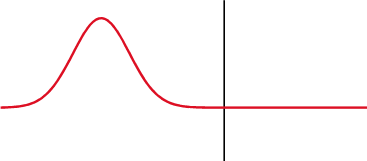Fichier:Partial transmittance.gif
Partial_transmittance.gif (367 × 161 pixels, taille du fichier : 67 kio, type MIME : image/gif, en boucle, 53 trames, 4,2 s)
Historique du fichier
Cliquer sur une date et heure pour voir le fichier tel qu'il était à ce moment-là.
| Date et heure | Vignette | Dimensions | Utilisateur | Commentaire | |
|---|---|---|---|---|---|
| actuel | 9 avril 2010 à 17:36 |  | 367 × 161 (67 kio) | Aiyizo | optimized animation |
| 26 novembre 2007 à 06:56 |  | 367 × 161 (86 kio) | Oleg Alexandrov | {{Information |Description=Illustration of en:Transmission coefficient (optics) |Source=self-made with MATLAB, source code below |Date=~~~~~ |Author= Oleg Alexandrov |Permission=PD-self, see below |other_versions= }} {{PD-se |
Utilisation du fichier
La page suivante utilise ce fichier :
Usage global du fichier
Les autres wikis suivants utilisent ce fichier :
- Utilisation sur ar.wikipedia.org
- Utilisation sur bg.wikipedia.org
- Utilisation sur ca.wikipedia.org
- Utilisation sur de.wikipedia.org
- Reflexion (Physik)
- Fresnelsche Formeln
- Zeitbereichsreflektometrie
- Anpassungsdämpfung
- Benutzer Diskussion:Bleckneuhaus
- Wikipedia Diskussion:WikiProjekt SVG/Archiv/2012
- Wellenwiderstand
- Benutzer:Ariser/Stehwellenverhältnis Alternativentwurf
- Benutzer:Herbertweidner/Stehwellenverhältnis Alternativentwurf
- Benutzer:Physikaficionado/Fresnelsche Formeln-Röntgenstrahlung
- Utilisation sur de.wikibooks.org
- Utilisation sur en.wikipedia.org
- Utilisation sur en.wikibooks.org
- Utilisation sur en.wikiversity.org
- Quantum mechanics/Timeline
- How things work college course/Quantum mechanics timeline
- Quantum mechanics/Wave equations in quantum mechanics
- MATLAB essential/General information + arrays and matrices
- WikiJournal of Science/Submissions/Introduction to quantum mechanics
- WikiJournal of Science/Issues/0
- Talk:A card game for Bell's theorem and its loopholes/Conceptual
- Wright State University Lake Campus/2019-1/Broomstick
- Physics for beginners
- MyOpenMath/Physics images
- Utilisation sur es.wikipedia.org
- Utilisation sur et.wikipedia.org
- Utilisation sur fa.wikipedia.org
- Utilisation sur fa.wikibooks.org
- Utilisation sur he.wikipedia.org
- Utilisation sur hy.wikipedia.org
- Utilisation sur it.wikipedia.org
Voir davantage sur l’utilisation globale de ce fichier.
